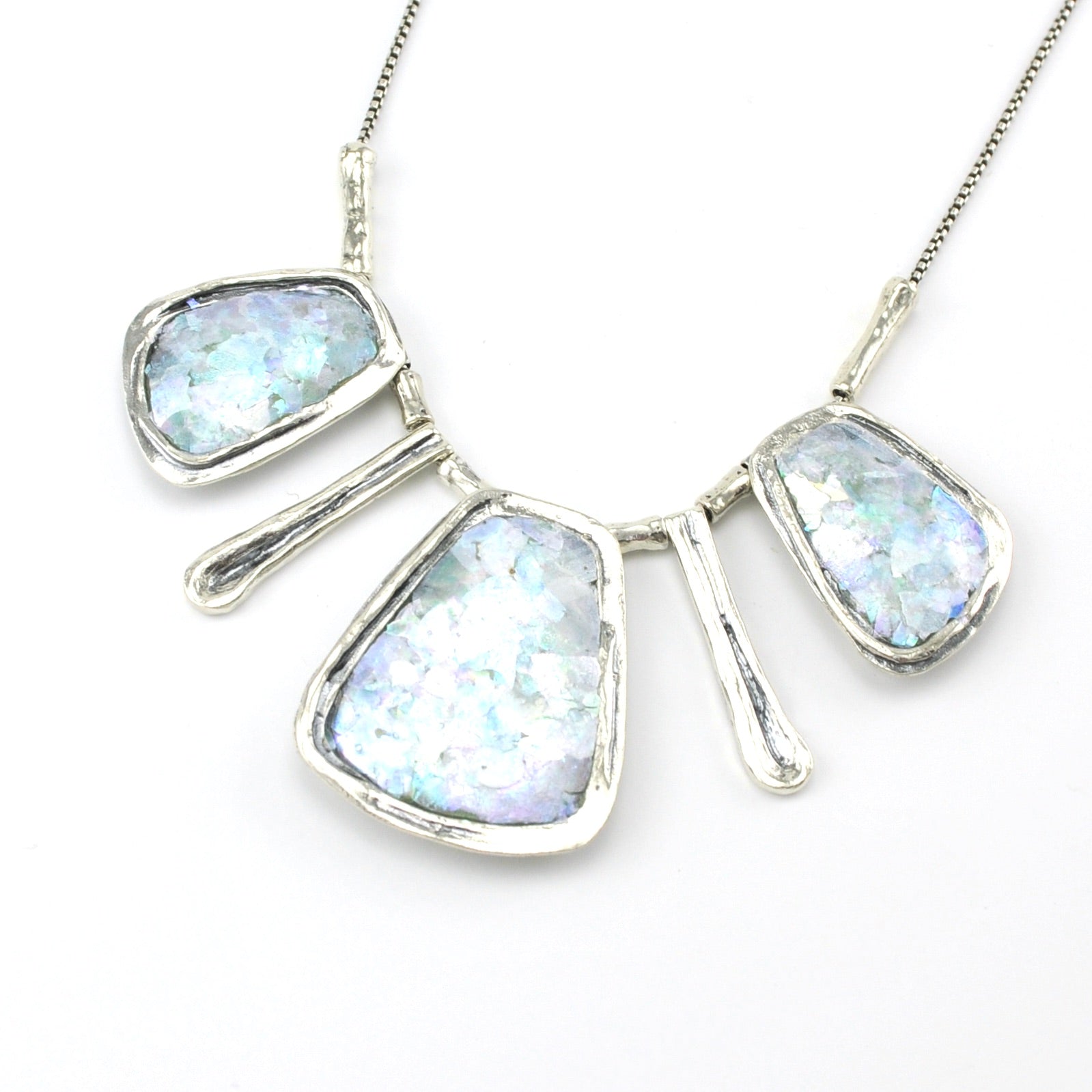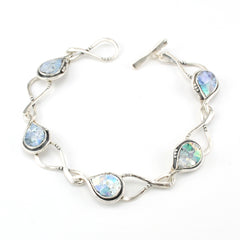
Roman Glassblowing

New ancient Roman glass jewelry has arrived. These glass fragments are found in Israel, the largest glass production area during the Roman empire. Blown glass was developed during the first century BC. The earliest workshops were located in Jerusalem and in the region of Galilee. This technique of using a blowpipe to create glass enabled glassmakers to produce large quantities of glass vessels quickly. Production of glass relied on fusing two primary ingredients of silica and soda. The region provided sand, or quartz, for the silica and for the soda they used salt that naturally was found in dry lake beds.
 Our jewelry designs feature aqua color glass that was produced the most during end of the first century BC and the first century AD and have a rainbow patina or mineral build up that has developed through the centuries on. This patina has been restored on our jewelry designs since most fragments do not have a natural consistent color. We also feature jewelry designs were the patina is washed away revealing the true aqua color of the glass.
Our jewelry designs feature aqua color glass that was produced the most during end of the first century BC and the first century AD and have a rainbow patina or mineral build up that has developed through the centuries on. This patina has been restored on our jewelry designs since most fragments do not have a natural consistent color. We also feature jewelry designs were the patina is washed away revealing the true aqua color of the glass. 